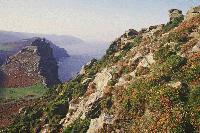
There are over 4,000 Sites of Special Scientific Interest (SSSIs) in England,
covering around 7% of the country's land area. Over half of these sites, by area,
are internationally important for their wildlife, and designated as Special Areas
of Conservation (SACs), Special Protection Areas (SPAs) or Ramsar sites. Many SSSIs
are also National Nature Reserves (NNRs) or Local Nature Reserves (LNRs).
SSSIs are the country's very best wildlife and geological sites. They include
some of our most spectacular and beautiful habitats - large wetlands teeming with
waders and waterfowl, winding chalk rivers, gorse and heather-clad heathlands,
flower-rich meadows, windswept shingle beaches and remote uplands moorland and peat bog.
It is essential to preserve our remaining natural heritage for future generations.
Wildlife and geological features are under pressure from development, pollution,
climate change and unsustainable land management. SSSIs are important as they support
plants and animals that find it more difficult to survive in the wider countryside.
Protecting and managing SSSIs is a shared responsibility, and an investment for the
benefit of future generations.
The unique and varied habitats of SSSIs have developed over hundreds of years through
management practices such as grazing and forestry, and need active management to maintain
their conservation interest. English Nature works with over 26,000 separate owners and land managers,
who work very hard to conserve these important sites. Maintaining goodwill and building upon
the enthusiasm, knowledge and interest of owners is vital to successfully manage these
nationally important sites.
|

